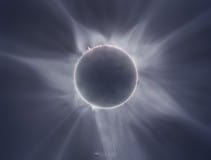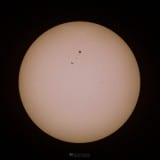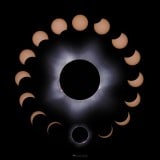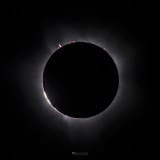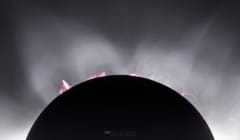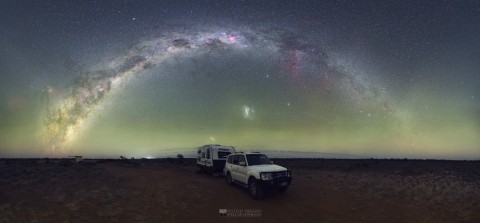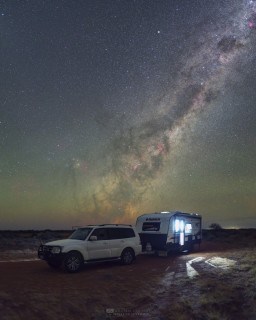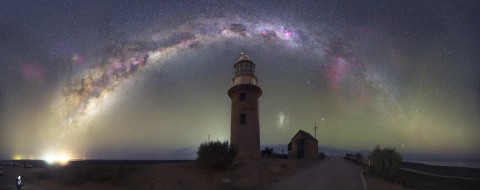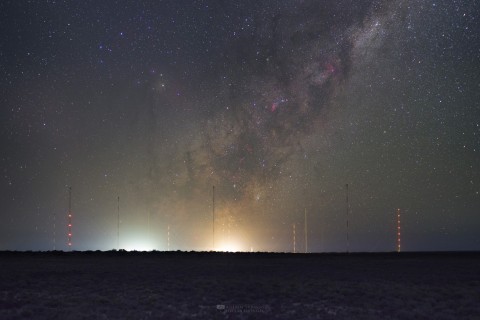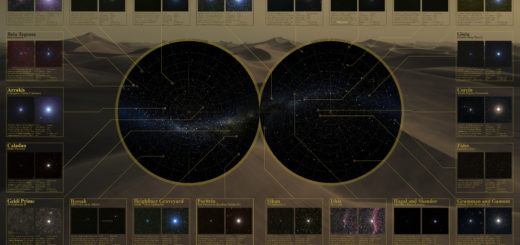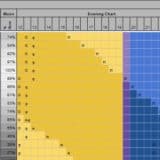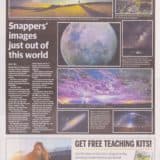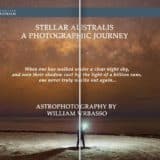Eclipse 2023
by admin · May 7, 2023
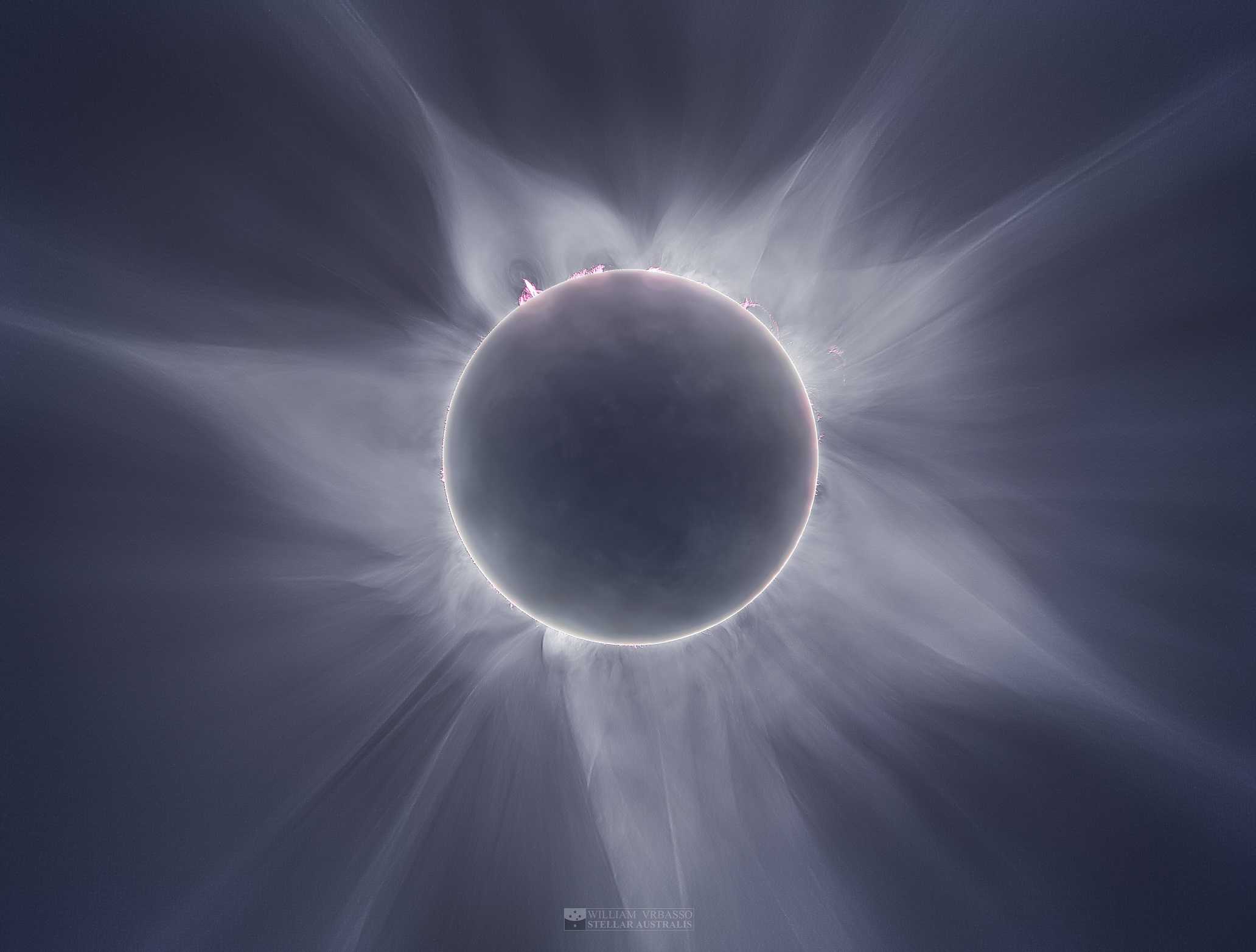
Results
Here are the images of the eclipse through my telescope. Read further down for details on my expedition to the 2023 eclipse in Exmouth, Western Australia.
The Eclipse
The total eclipse occurred on the 20th April 2023 near Exmouth, Western Australia. It was actually a hybrid eclipse, transitioning from annular to total as the shadow moved across the Indian ocean towards Australia. The path to totality was mostly over the ocean but just happened to clip the top left of Western Australia near Exmouth. Totality at the centre-line would be around 60 seconds.
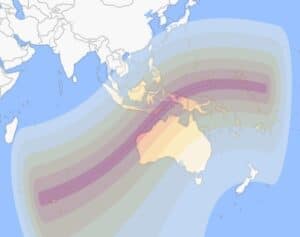
The Journey
Planning began early. Apart from a few islands here and there, the totality would only cross the mainland on a narrow peninsula which is mostly empty apart from one main town called Exmouth. It was expected that between 20,000 and 30,000 people would descend upon the small town to witness this amazing event and that meant getting in early or missing out.
I booked in October 2020 a plot of empty land in the Exmouth overflow caravan park that was set aside by the council to host the armada of caravans, RVs, trailers, etc that would arrive at the town looking for a spot to park. The plan was to drive the 1,700km from Albany to Exmouth with a rental caravan and all our imaging equipment. A long trip.
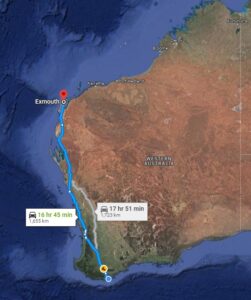
I started driving to from Albany to Perth on the 15th April. There I stayed the night at my brother Richard's house, and in the morning of the 16th he joined me in my journey to the north (Richard is also a keen astrophotographer).
Ten hours later (and many fuel stops along the way), we settled in for the night about an hour south of Carnarvon at a rest stop. We had the rest stop pretty much to ourselves. It was simply a dirt strip a little away from the main road, but essentially in the middle of nowhere. Even though the day was hot, at evening a cool breeze swept in and made the night much more comfortable. We even had mobile reception and enjoyed watching a few matches of the premier league football before the evening turned to night.
Without much else to do, we took the opportunity to practice some night photography. Here are my results:
Exmouth
On the 17th April, after about 6 hour drive from a rest stop we arrived in Exmouth. The campgrounds was an incredible sight to see. There were so many caravans, RVs, and tents all in one place. It was very well organised by the council - I was impressed.
Having arrived at midday we took the opportunity to do some scouting around for the spot we would use to watch the eclipse. Unfortunately, the council had blocked off all the roads leading the canyons for the duration of the week which would've been the prime spots to take landscape photos of the canyon and the eclipse above. I suspect they feared either people injuring themselves been packed along a narrow canyon / road fighting for spots. In the end we avoided the official viewing spots (along with their crowd) and selected a remote beach pretty much in the centre of the path to totality.
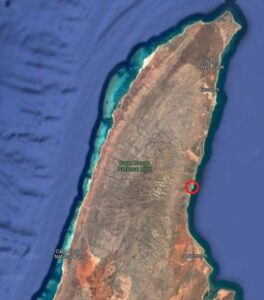
Night-time Around Exmouth
The following day of the 18th we took it easy. We visited the local tourist bureau, attended an astrophotography talk by Roger Groom, and then scouted around the place for possible locations to do nightscapes. We chose to target the Harold Holt large radio station and the de-commissioned lighthouse, both to the north of Exmouth.
The Harold Hold station threw out a lot of light, most of the shots for that didn't really work out. I took some of the lighthouse (a popular spot for the multitude of astrophotographers that were in town). These worked out a bit better.
The Big Day
The day of the eclipse arrived on the 20th (we spend the 19th taking it easy). We drove and set-up on the beach before dawn before the dawn to ensure we got a prime spot on the beach. Having gone there the day before we knew that it would be low tide when we arrived but high tide would be at 11:15pm (15 minutes before the eclipse). We also knew the level of high tide and picked out a spot that should've been just above it.
The dawn came, bringing in a glorious day clear of clouds (most thankfully).
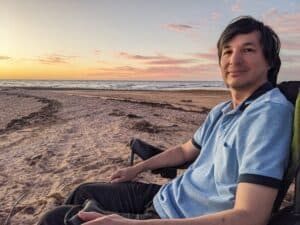
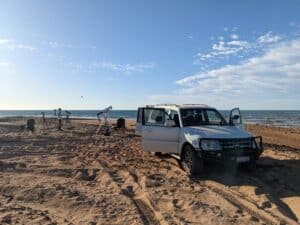
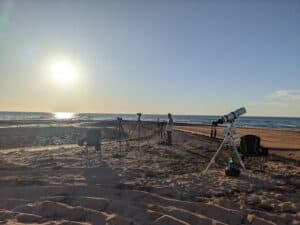
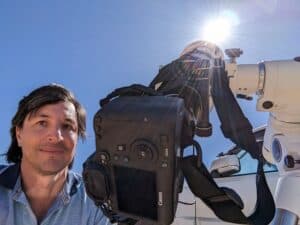
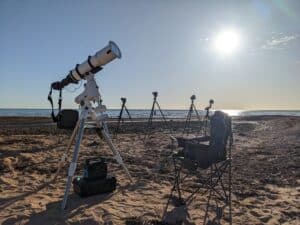
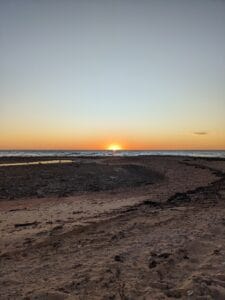
With all the timings in had, all we had to do is wait until around 11 for the eclipse. However, the wind really picked up, blowing sand around. I had to move my telescope behind my car to avoid the sand getting into my sensitive optics. My brother stayed out on a small peninsula as the tide came in. Whilst we knew the tide would be high, the wind blew the waves over the beach such that the tripods were getting a bit of the water. We survived fine, but some others ended up knee deep in water and unable to move their telescopes - probably because they were streaming or doing a time series of photos.
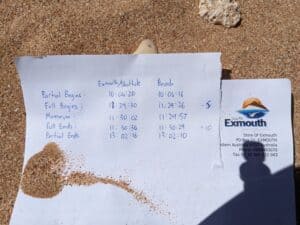
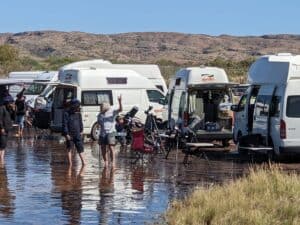
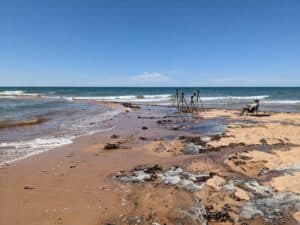
The Eclipse
When the partial eclipse started to happen (about an hour prior to totality) I started doing shots every 10 minutes through my solar filter. This was pretty straight-forward. My telescope mount was tracking the movement of the sun across the sky but the alignment was a little out - every 10 minutes or so I just had to centre the sun in the live view (this was to catch me out later).
The daylight slowly dimmed as the partial eclipse continued, and there was a slight drop in temperature. Totality was approaching!!!
At the moment of totality the light dramatically dimmed to almost twilight level! It all happened very fast like someone flipping a light switch. Quickly I ripped off the solar filter and started madly taking shots a different exposures. After probably 15 seconds into the 60 seconds of totality I realised I had been winding the dial the wrong way and had been taking exposures all of the same length! Even worse, I only then checked the preview images and realised that the sun was not centred and almost at the edge of the sensor. In some panic I re-centred the image and started the exposure sequence again - but alas I probably lost over a third of the 60 second totality. This hurt me a bit because some of the longer exposures I wanted to get the earth-shine in the moon were missed. It took alot of extreme processing to get any moon details in my main image.
Maybe in 2028 for the next eclipse...
In the End
Not much to tell about the afterward. We packed up and left that same day to head as far as we can south. We had a plan to do some night photography at Kalbarri on the way home, but in the end the clouds moved in and eliminated that opportunity.
So there we have it. My first eclipse (total), and now I yearn for the next one. One thing is for sure, I ain't driving there (the next total eclipse in Australia is over in the eastern states).

